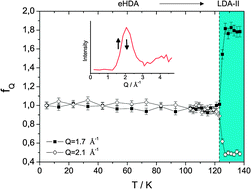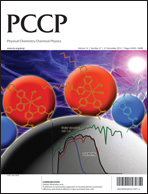Limits of metastability in amorphous ices: the neutron scattering Debye–Waller factor
Abstract
Recently, it became clear that relaxation effects in amorphous ices play a very important role that has previously been overlooked. The thermodynamic history of amorphous samples strongly affects their transition behavior. In particular, well-relaxed samples show higher thermal stability, thereby providing a larger window to investigate their glass transitions. We here present neutron scattering experiments using fixed elastic window scans on relaxed forms of amorphous ice, namely expanded high density amorphous ice (eHDA), a variant of low density amorphous ice (LDA-II) and hyperquenched glassy


 Please wait while we load your content...
Please wait while we load your content...